Spring Boot构建REST服务
1.基础版
依赖
<dependency> <groupId>org.springframework.boot</groupId> <artifactId>spring-boot-starter-data-jpa</artifactId> </dependency> <dependency> <groupId>org.springframework.boot</groupId> <artifactId>spring-boot-starter-data-rest</artifactId> </dependency> <dependency> <groupId>org.springframework.boot</groupId> <artifactId>spring-boot-starter-web</artifactId> </dependency> <dependency> <groupId>mysql</groupId> <artifactId>mysql-connector-java</artifactId> <scope>runtime</scope> <version>5.1.27</version> </dependency> <dependency> <groupId>org.projectlombok</groupId> <artifactId>lombok</artifactId> </dependency>
配置
spring: datasource: username: root password: root url: jdbc:mysql://127.0.0.1:3306/jpa?useUnicode=true&useSSL=false&serverTimezone=Asia/Shanghai type: com.zaxxer.hikari.HikariDataSource jpa: database: mysql #连接数据库类型 database-platform: org.hibernate.dialect.MySQL57Dialect #配置默认引擎 hibernate: ddl-auto: update show-sql: true
实体类
@Data @Entity(name = "user_jpa") public class User { @Id @GeneratedValue(strategy = GenerationType.IDENTITY) public Integer id; public String name; public Integer age; }
dao
public interface UserDao extends JpaRepository<User, Integer> { }
测试
查询(GET请求)
批量查询
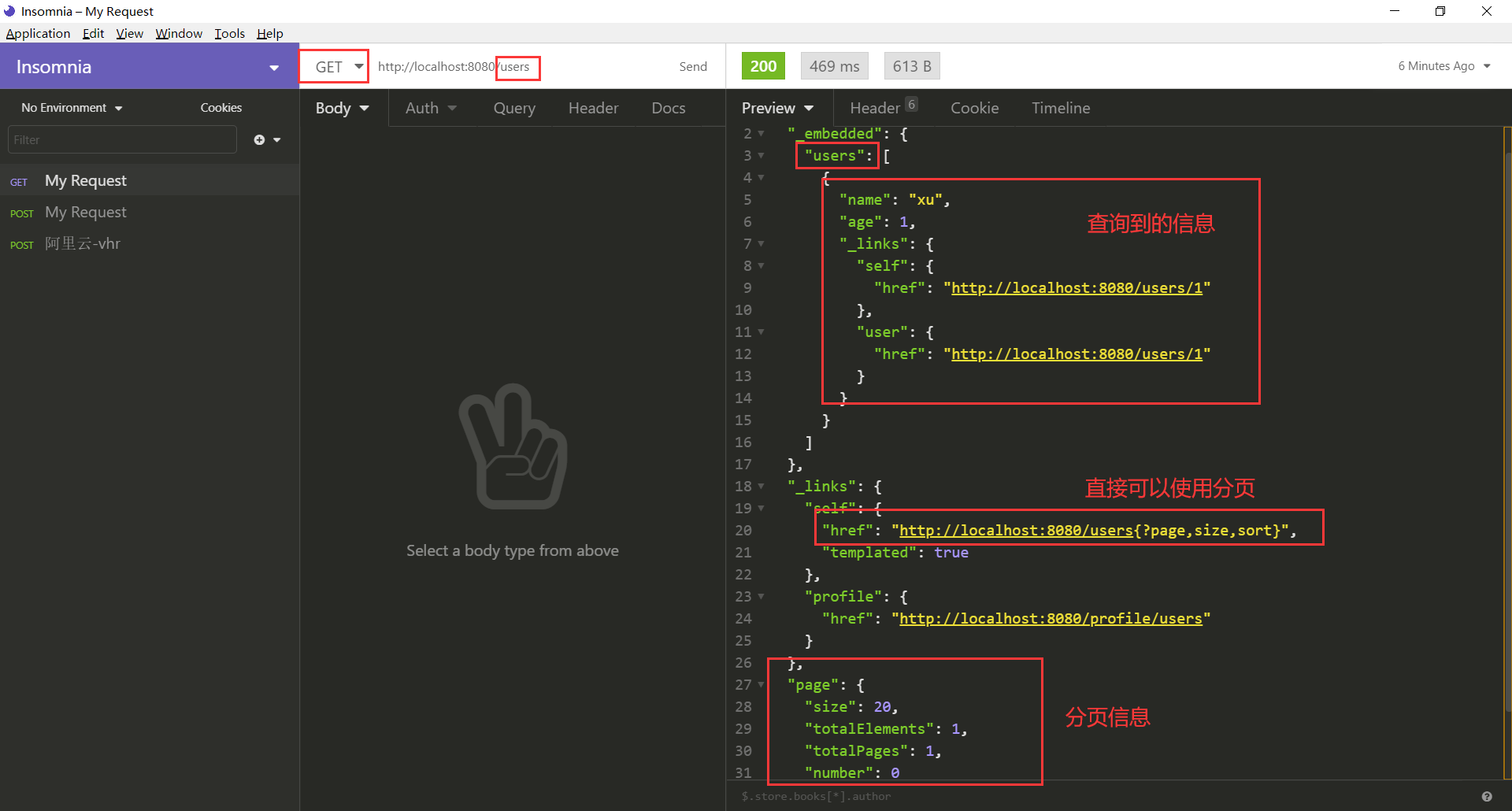
批量查询 分页查询
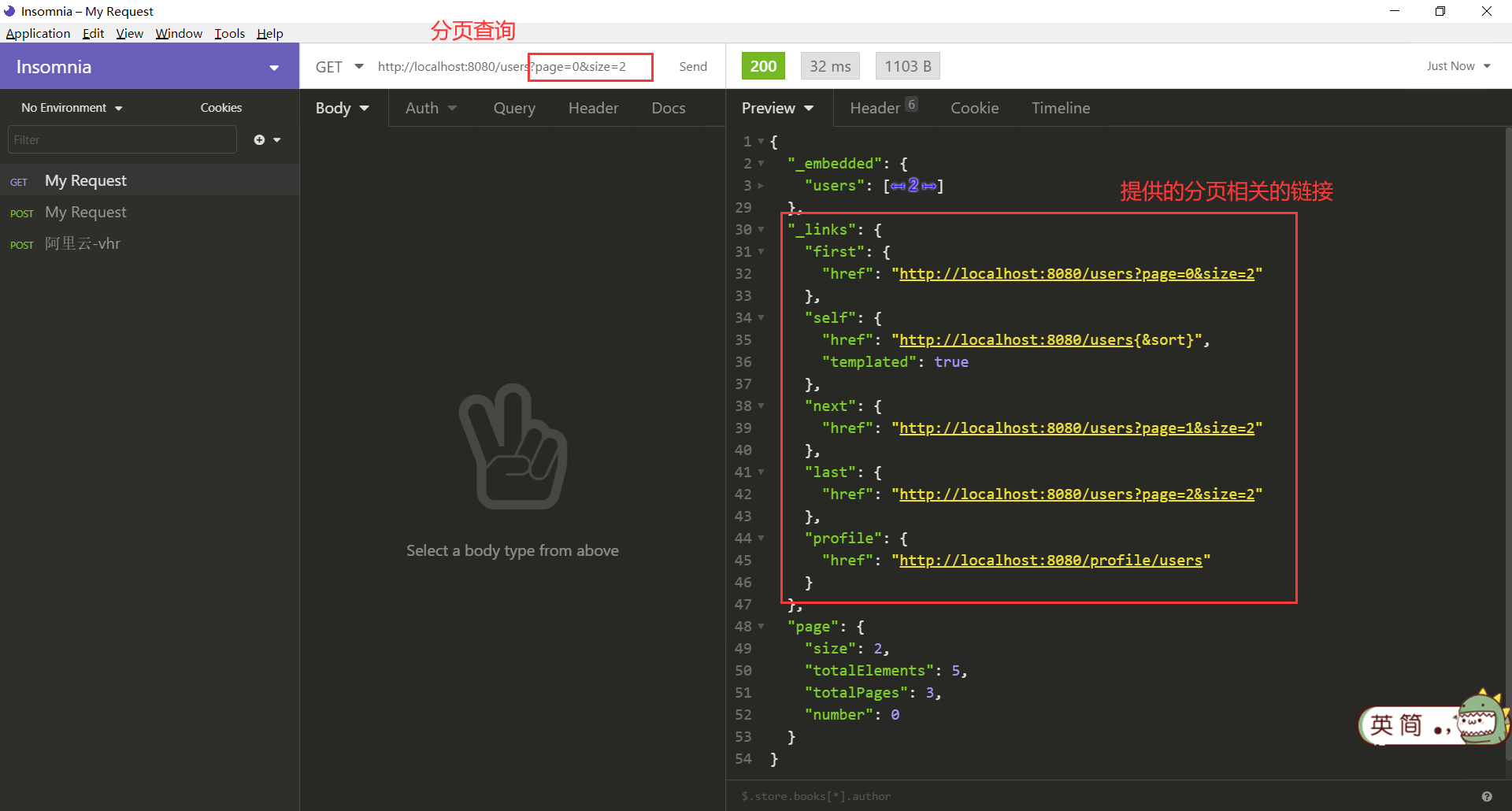
分页查询 分页+排序
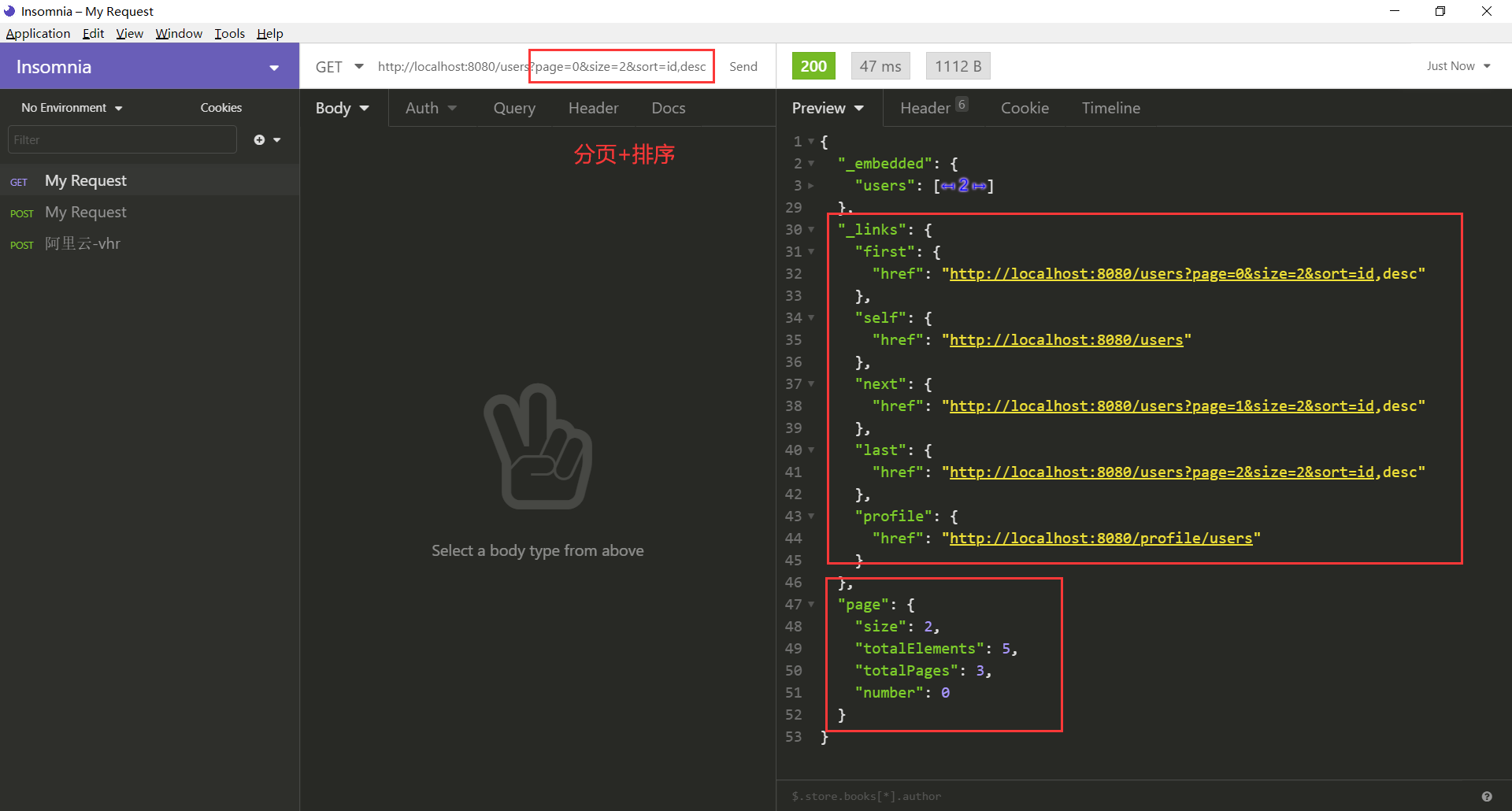
分页+排序 单个查询
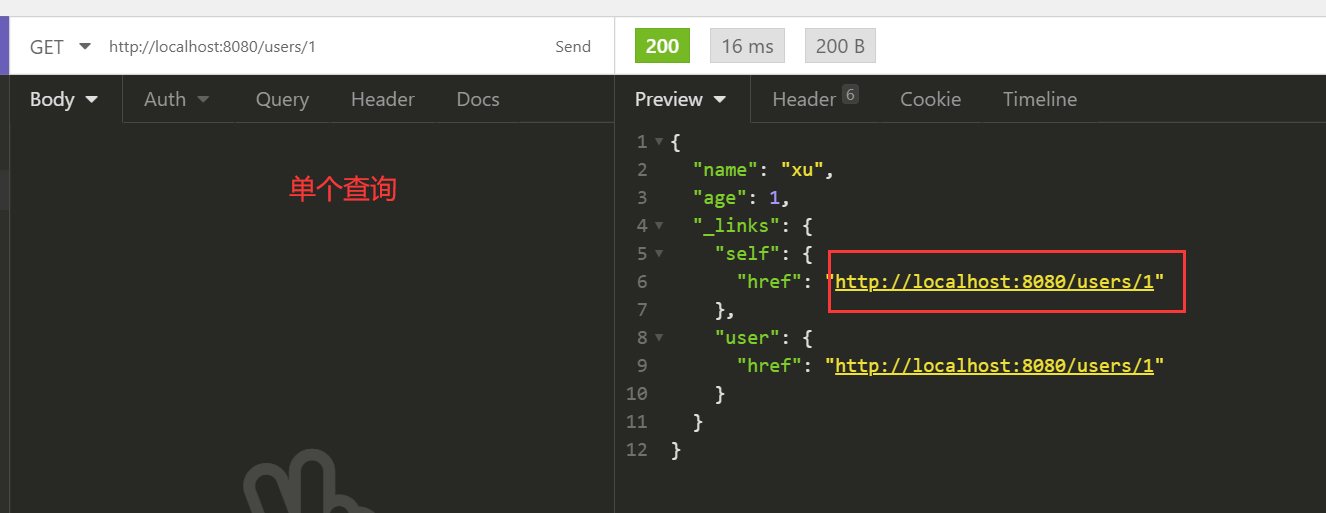
单个查询 保存(POST请求)
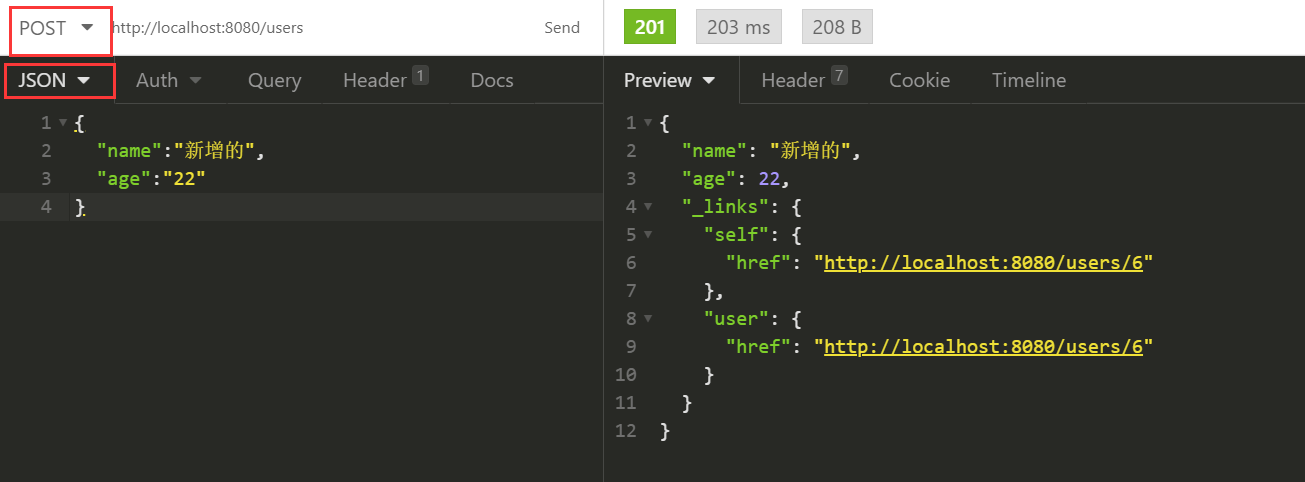
保存 更新(PUT请求)
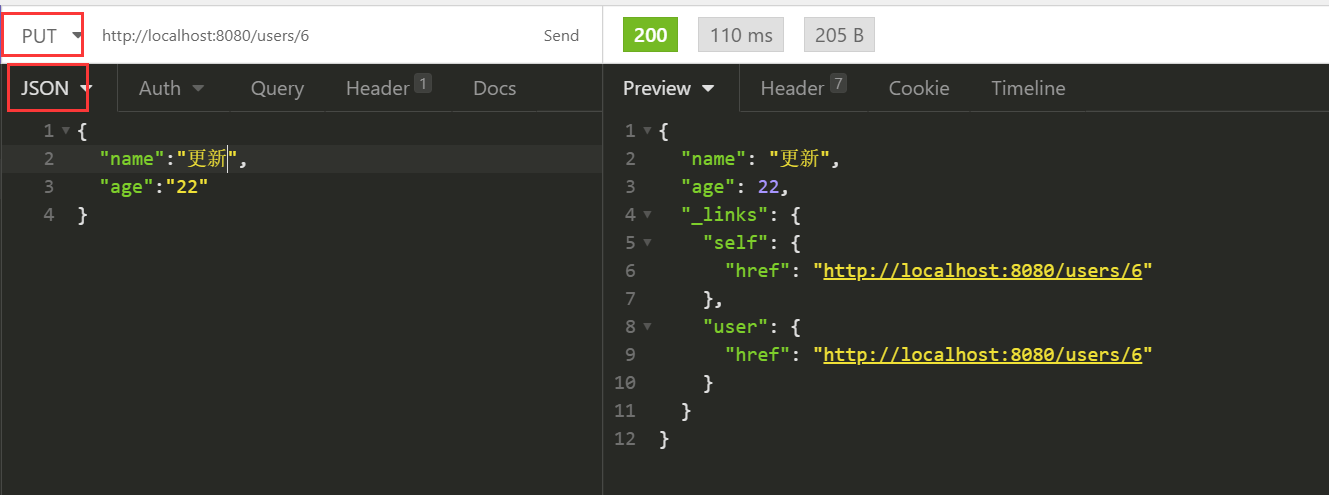
更新 删除(DELETE请求)

删除
到此就是一个基础版的REST服务了。
2.进阶版
1.自定义查询方法
修改dao
public interface UserDao extends JpaRepository<User, Integer> {
List<User> findByNameContaining(@Param("name") String name);
}
重启项目,访问http://localhost:8080/users/search

此时便可以看到所有的自定义查询方法(默认路径就是方法名)。
访问自定义查询方法findByNameContaining
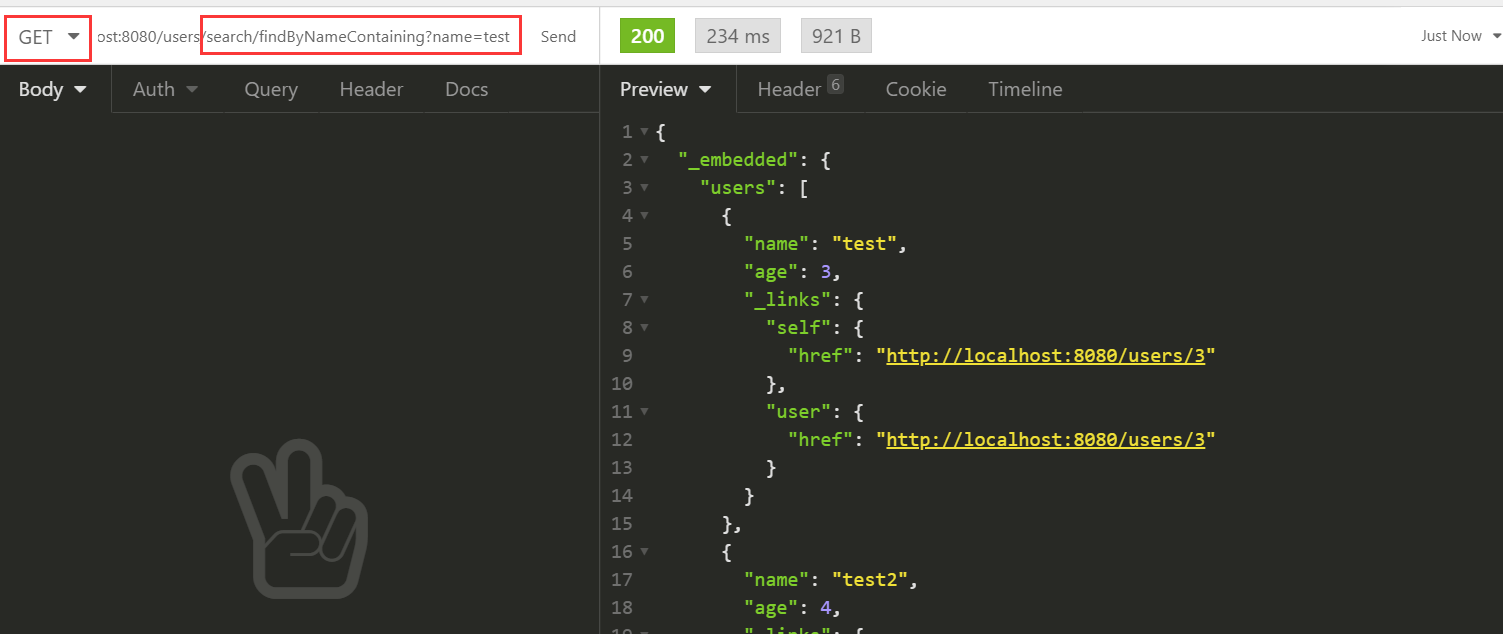
由于JPA的关键字命名一般较长,为了更加便捷,可以在自定义查询方法上使用@RestResource注解
@RestResource参数:
exported:是否暴露,默认为true
path:访问自定义查询方法的路径
- rel:在生成到此资源的链接时要使用的rel值。
public interface UserDao extends JpaRepository<User, Integer> {
@RestResource(path = "byname", rel = "findByName")
List<User> findByNameContaining(@Param("name") String name);
}

2.自定义请求路径、结果 key 值
(1)默认情况下请求路径都是实体类名小写加 @RepositoryRestResource
@RepositoryRestResource参数:
- path:表示将所有请求路径中的
(例:)uesrs,如http://localhost:8080/us - collectionResourceRel:表示将返回的 JSON 集合中的
(例:)uesrs集合的 key。 - itemResourceRel :表示将返回的 JSON 集合中的单个
(例:)uesr的 key。 - exported:是否暴露,默认为true
@RepositoryRestResource(collectionResourceRel = "userlist", itemResourceRel = "u")
public interface UserDao extends JpaRepository<User, Integer> {
@RestResource(path = "byname", rel = "findByName")
List<User> findByNameContaining(@Param("name") String name);
}
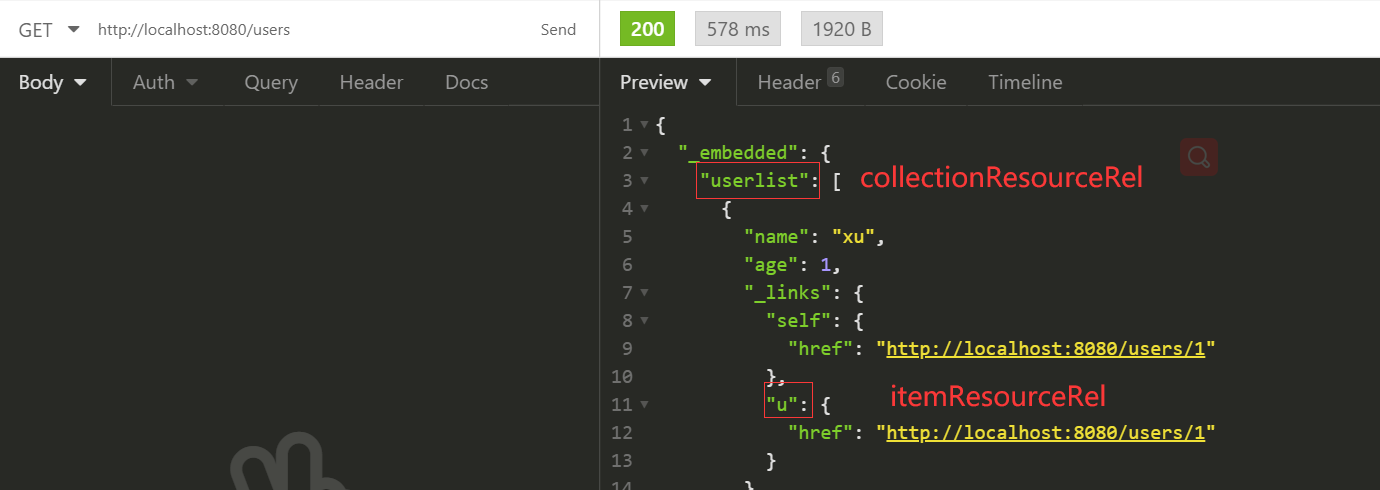
3.配置REST
- 配置文件
#rest 配置
data:
rest:
#添加统一前缀
base-path: api
配置后http://localhost:8080/users-->http://localhost:8080/api/users
#rest 配置
data:
rest:
#添加统一前缀
base-path: api
#是否在创建实体后返回记录,默认为true
return-body-on-create: true
#是否在更新实体后返回记录,默认为true
return-body-on-update: true
#每页的默认大小,默认20
default-page-size: 20
......
- 编写配置类(优先级更高)
/**
* rest的配置类
*/
@Configuration
public class RestConfig implements RepositoryRestConfigurer {
@Override
public void configureRepositoryRestConfiguration(RepositoryRestConfiguration config) {
config.setBasePath("api").setDefaultPageSize(20);//链式编程,可以配置多个
}
}
4.配置 CORS(解决跨域请求问题)
单独配置:添加
@CrossOrigin注解全局配置:编写配置类,重写
addCorsMappings方法